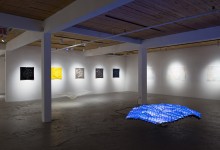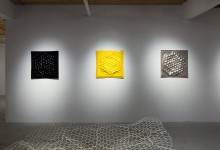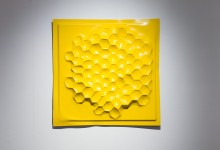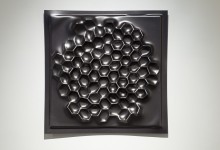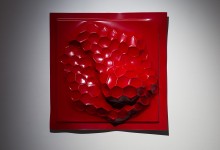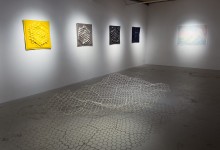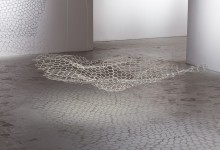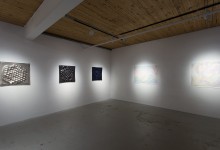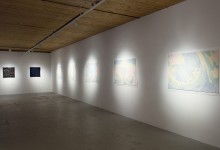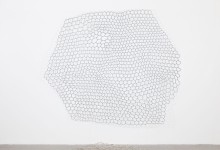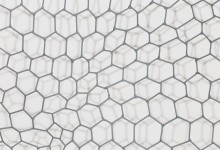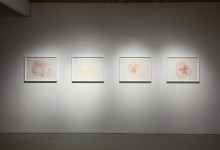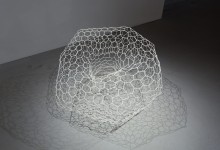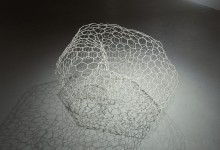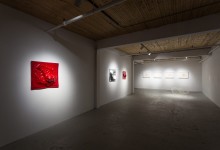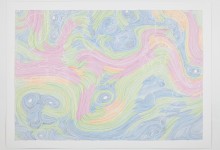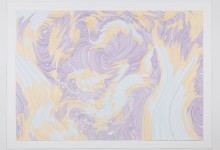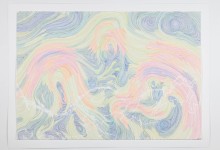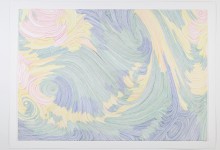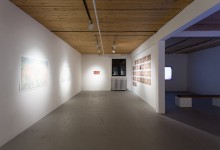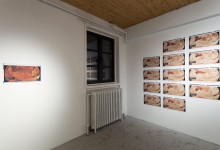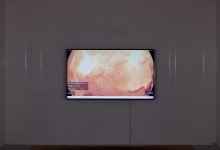Opening reception: Saturday, September 8, 2018 from 3-5 p.m.
Colleen Wolstenholme: Apropos Obsolescence
Art Mûr, Montreal, QC
Text by Alex Borkowski
Colleen Wolstenholme’s interest in the brain has flowed from her longstanding practice of making meticulous impressions of pharmaceutical drugs, such as Xanax, Prozac and Adderal, creating larger-than-life plaster pills and minute gold and silver cast beads to be worn as jewelry. Such pills, of course, work by adjusting the function of nerve cells to alter the chemistry of the brain.
In her recent work Hexagraphy, shown at Art Mûr as the culmination of her PhD research at York University, Wolstenholme takes the hippocampus as her subject – the region of the brain that is vital to both short and long-term memory, as well as spatial navigation. The hippocampus is home to place and grid cells, which fire in a hexagonal pattern to create a cognitive map that allows the body to orient itself in space.
Hexagraphy is composed of a topography of welded steel hexagons, upon which Wolstenholme has melted a white polystyrene sheet. The hardened plastic is then removed to create two separately installed sculptures – the now-redundant supporting grid and the crumpled screen, backlit with small blue and green LED lights on the gallery floor. The screen appears wet, warped and fleshy, perhaps like surface of the brain, and the lights flicker in a pattern that evokes the hexagonal neural field of the hippocampus. Yet the work also opens itself up to a variety of other visual affiliations: infrared projections of weather patterns on a landscape, an electrified reflecting pool, a magic carpet.
The exhibition title Apropos Obsolescence refers to Wolstenholme’s approach to technology: the pixels that comprise Hexagraphy support a ratio of approximately 35 pixels per square foot – a resolution that stands in hyperbolic contrast to the compulsion towards ever-finer imaging technology.
An affection for the mathematical constancy of the grid is palpable throughout Wolstenholme’s practice. She has described the pleasurable, calming effect of drawing elaborate hexagonal patterns. But there is equally a sense that she tests the limits of strict Euclidian geometry, infusing elements of randomness, as well as references to bodily phenomena, into her process. Wolstenholme builds her grids according to a set of pre-determined rules, cutting steel rods of relatively, but not precisely, the same size and then welding them back together in a hexagonal pattern. These variances are what produce the rough-hewn, rippling quality of Wolstenholme’s geometric matrixes. Her labour therefore becomes an act of performative automatism and the mistakes are built into the method.
This element of contingency is crucial for Wolstenholme. The technique of welding, managing electrical force to alter such inflexible material, is physically demanding and there is an element of the absurd in undertaking this labour of cutting through steel rods only to reassemble them again. The sculpture is thus a residue of this method, which encompasses both structure and flow, the precision of practice and contingent outcome.



